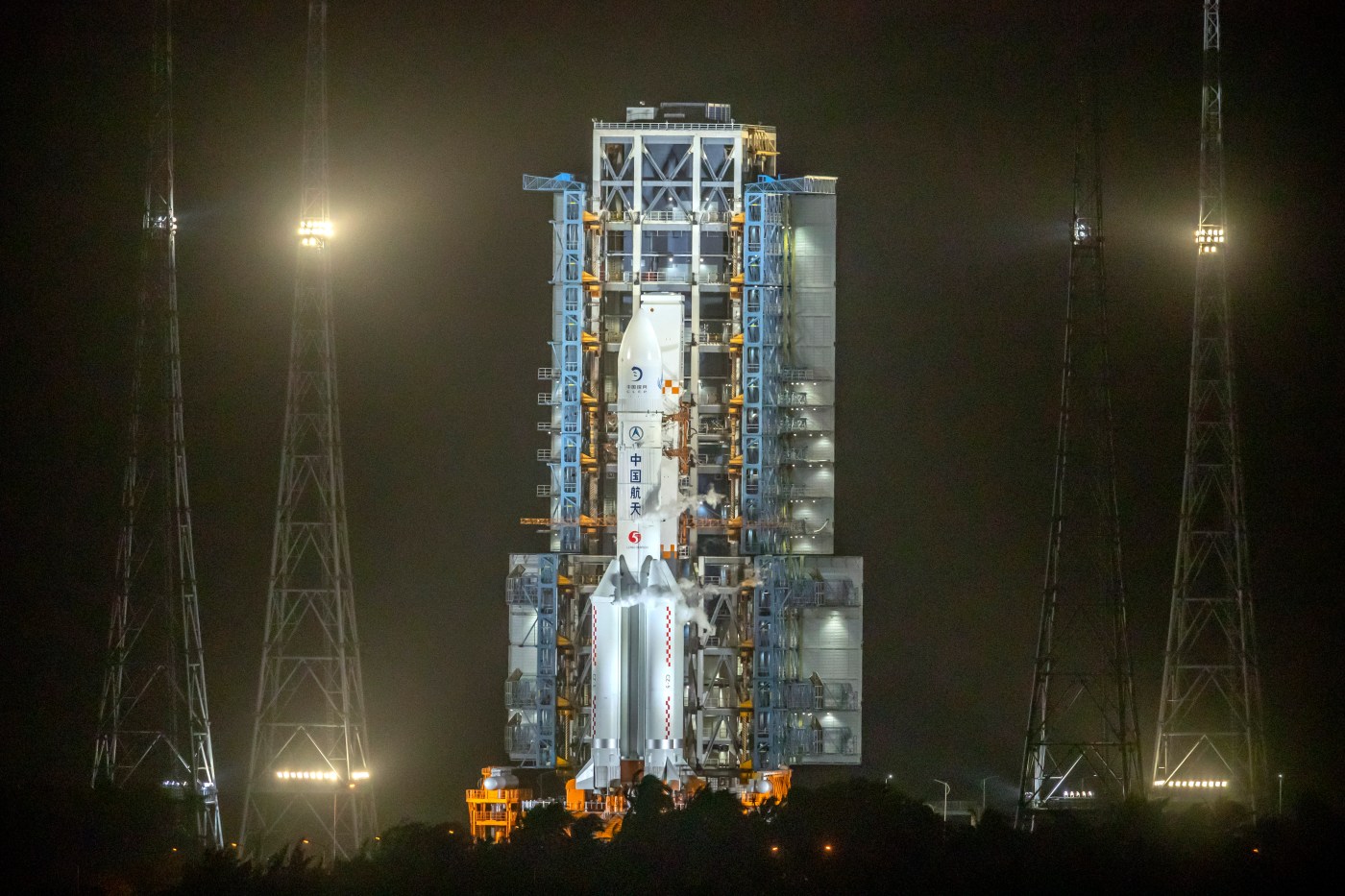In late June, China’s space program brought back the first rock and soil samples from the mysterious far side of the moon. It was a major triumph. Scientists worldwide are eager to use these samples to learn more about the origin of the moon and Earth.
At the same time, others are worried that China is on the way to winning a new space race for the first permanent base on the moon. China’s mission makes it clear that the country sees the moon as a strategic asset, they say, rather than a site for purely scientific exploration.
So far, China’s lunar ambitions are yielding valuable data that’s benefitting the international scientific community and the U.S. space program, which has plans to land the first astronauts on this unexplored part of the moon. The more we earthlings know about this region, the better, so cautious optimism is in order. China’s early success could spur U.S. leaders to put more resources into lunar exploration.
The main concern is that political tensions will prevent scientists and engineers from engaging in the kind of international collaboration that would make lunar exploration safer and more productive. At an online briefing called Race to the Moon, held by SpaceNews, several space policy experts said it’s crucial for the United States to be the first country to establish a moon base because whoever is first will set the rules and principles. Namrata Goswami, co-author of Scramble for the Skies, said the United States would likely establish a more democratic, cooperative system.
China’s craft, Chang’e-6, landed equipment that drilled below the moon’s surface and scooped samples from a region known as the South Pole-Aitken Basin. The mission also put a communication satellite in the lunar orbit, which is necessary to send messages back and forth to any craft on the moon’s far side.
Concerns about China
Those who aren’t cheering this as an advance for science are speculating that China might violate the global outer space treaty and hoard territory or resources. At a congressional hearing last spring, NASA Administrator Bill Nelson expressed concern that China would claim key lunar territory and exclude everyone else.
The main resource scientists know about on the moon is frozen water lurking in the South Pole-Aitken Basin and other craters nearby — which is why Chang’e-6 landed there. That basin is also the focus of two future missions, Chang’e-7 and Chang’e-8. Those missions will explore the ice in the region and the possibility of extracting water and other resources, with the ultimate goal of building a research outpost.
And not coincidentally, the same region is also the target of the next crewed U.S. mission to the moon — called Artemis — which is supposed to happen sometime this decade.
The water in this region has potential beyond supplying a moon base. Water can also be used as a source of hydrogen to fuel missions aimed further out. The moon, being smaller than Earth, exerts much less gravitational pull on spacecraft, making it a nice launch spot, including for laser-propelled probes that could potentially travel to planets orbiting distant stars.
Simon Peter “Pete” Worden, a former director of NASA’s Ames Research Center, said the far side of the moon has a couple of other resources as well. One is relative radio silence, allowing an unprecedented chance for radio astronomers to look for remnants of the early universe or even search for alien civilizations.
Dangers and difficulties
But it’s too early to start fighting over the moon. We still don’t know how much water is hidden near the lunar south pole, said James W. Head, a planetary geologist who chose the sites for the Apollo missions and helped train the astronauts. He said he’s eager to see what analysis of the chemistry and ages of the Chang’e-6 material will tell us.
“It’s been a real mystery,” said Head, who is now a professor at Brown University. Because the moon isn’t influenced by erosion or plate tectonics, its surface holds a record of the impacts that dominated its early history and ours.
Going back to the moon, Head said, is an essential step for sending people to Mars. “Astronauts who’ve been to the moon will tell you that there’s no way anybody’s going to go to Mars without having field experience on the moon first.”
The world recently got a reminder of the danger and difficulty of space flight when a helium leak and other problems were discovered in the Boeing Starliner during its first crewed mission. The two astronauts who had been aboard the craft have been delayed for weeks aboard the International Space Station.
Related Articles
Scientists think humans could shelter in lunar cave
How to observe a ‘moon illusion’ when the strawberry full moon peaks tonight
NASA watchdog report: 100+ cracks on heat shield biggest threat to human moon mission
Boeing said that the astronauts are in no danger, and could be returned any time, but the company is doing some additional troubleshooting at the White Sands Test Facility in New Mexico, after a new problem emerged with additional helium leaks and the unexpected shutdown of some of the thrusters.
These malfunctions are scary, since they involve keeping people alive in space. Any problems would be more challenging on the moon, which is 1,000 times as far from home as the space station. It would be safer for everyone if China and the United States could collaborate and nobody rushes into a dangerous mission.
Exploring the moon with astronauts is difficult and dangerous. Collaboration gives every nation the best shot. But the public often responds to rivalry, so ironically, it’s the perception of a competition with China that could help garner enough public support to get things off the ground.
F.D. Flam is a Bloomberg Opinion columnist. ©2024 Bloomberg. Distributed by Tribune Content Agency.












